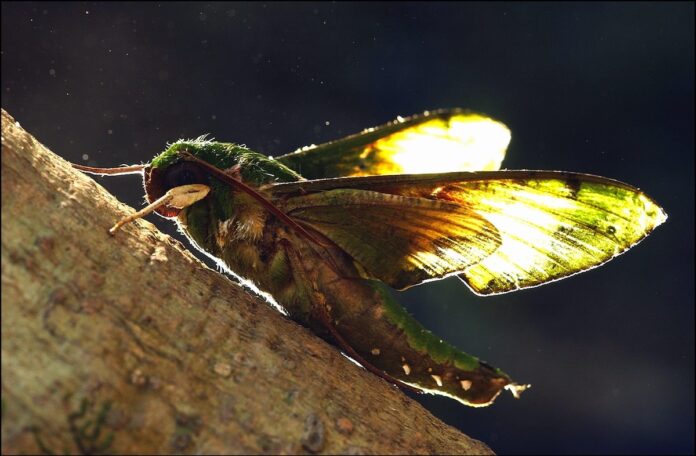"Unveiling the Night: The Crucial Role of Nocturnal Pollinators in Our Ecosystems"
The Euchloron Megaera Moth: A Nocturnal Pollinator of Orchids
In the intricate web of ecosystems, the role of pollinators is paramount, yet often overlooked. Among these unsung heroes is the Euchloron megaera moth, a nocturnal pollinator that plays a vital role in the reproduction of various plant species, particularly orchids. This moth, with its unique adaptations for nighttime activity, is gaining recognition for its ecological importance.
The Role of Nocturnal Pollinators
Recent research from Lund University in Sweden highlights the significance of nocturnal pollinators like the Euchloron megaera moth. The study reveals that in 90% of cases examined, nocturnal pollinators are just as effective as their daytime counterparts, such as bees and butterflies. This finding challenges the long-held belief that pollination predominantly occurs during daylight hours.
The authors of the study emphasize the importance of the diel cycle—the daily transition between day and night—which significantly influences environmental conditions and biological activities. Their synthesis of data from 135 studies worldwide found that many plant species exhibit similar reproductive success regardless of whether they are pollinated at night or during the day.
The Fascinating Life of Euchloron Megaera
The Euchloron megaera moth, often referred to as the "orchid moth," is particularly known for its role in pollinating various orchid species. This moth is equipped with specialized mouthparts that allow it to access nectar deep within the flowers of orchids, facilitating the transfer of pollen. Its nocturnal habits make it an essential pollinator for plants that bloom at night, ensuring their reproductive success.
Moths like the Euchloron megaera are attracted to the scents and colors of night-blooming flowers, which often emit stronger fragrances in the dark. This adaptation not only aids in their survival but also enhances the reproductive capabilities of the plants they pollinate.
The Importance of Research
The Lund University study sheds light on the often-ignored contributions of nocturnal pollinators. Researchers Liam Kendall and Charlie Nicholson noted that previous studies may have overlooked these vital species due to a bias towards daytime pollinators. Their meta-analysis revealed that many plants can thrive with a variety of pollinators, suggesting a flexibility in pollination strategies that could be crucial for plant survival in changing environments.
Kendall pointed out that the perception of daytime pollinators as more aesthetically pleasing may contribute to their prominence in conservation efforts. "Bees are such a big part of our cultural identity," he remarked, contrasting them with moths, which are often viewed as less appealing.
Implications for Conservation
The findings of this research have significant implications for conservation strategies. As human activities continue to threaten biodiversity, it is essential to recognize the role of nocturnal pollinators in maintaining healthy ecosystems. The study advocates for a more inclusive approach to conservation that considers both daytime and nocturnal pollinators.
Furthermore, the researchers highlight the need to address light pollution, which can disrupt the natural behaviors of nocturnal species. Excessive artificial lighting can interfere with the moths’ navigation and foraging patterns, potentially harming their populations and, consequently, the plants they pollinate.
Conclusion
The Euchloron megaera moth exemplifies the critical role of nocturnal pollinators in our ecosystems. As research continues to unveil the complexities of pollination, it becomes increasingly clear that both day and night pollinators are essential for the health of our planet. Recognizing and protecting these often-overlooked species is vital for ensuring the sustainability of our ecosystems and the myriad plant species that depend on them.
As we move forward, it is crucial to broaden our understanding of pollination dynamics and implement conservation strategies that encompass the full spectrum of pollinators, ensuring a balanced and thriving environment for generations to come.
